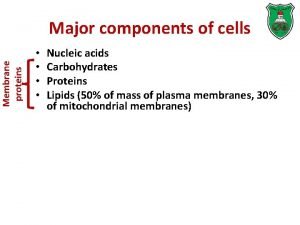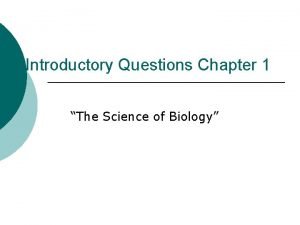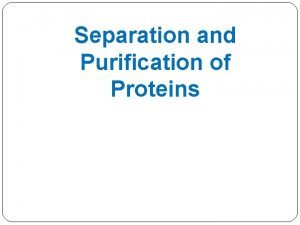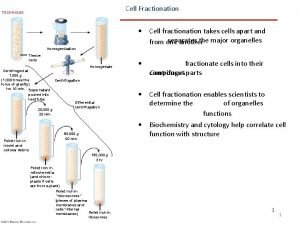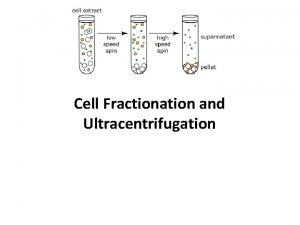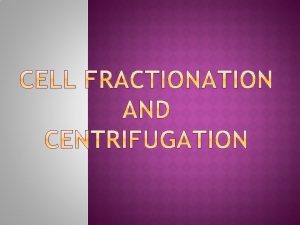LI To know the steps in cell fractionation









- Slides: 9

LI: To know the steps in cell fractionation and ultracentrifugation and understand the reasons for these steps To be able to interpret data on these Key Words: • Fractionation, Centrifuge, Supernatant, Differential centrifugation, Ultra Centrifugation

What does cell fractionation involve? • The separation of different parts of the cell is an important technique • used to study ▫ cell structure ▫ function • The process of cell fractionation and centrifugation includes several steps which you need to be aware of!

How to use a centrifuge • https: //www. youtube. com/watch? v=SCNEf. R 8 5 a. Yk

Steps of Cell Fractionation & Ultra Centrifugation 1. Cell Fractionation - Tissue to be studied is cut into small pieces (Minced) and placed into a COLD, ISOTONIC and BUFFERED solution. 2. These are then ground into smaller pieces using a Homogenizer (Pestle and mortar) releases the organelles from the cell. 3. The Homogenate is filtered to remove any complete cells and large debris i. e. Cell Wall/Membrane 4. The homogenate is placed in a test tube each test tube MUST weight the same amount as the centrifuge needs to be balanced. 5. The test tube is placed in the centrifuge which must be balanced. 6. At slower speeds the larger fragments collect at the bottom of the tube and smaller ones remain near the top suspended in a liquid called the SUPERNATENT LIQUID. 7. These larger fragments (Sediment Pellets) are then removed and the supernatant remaining is re-spun at a faster speed (more force) and some of the smaller fragments collect at the bottom forming a new pellet. 8. By continuing in this way smaller and smaller fragments will be recovered.

Important info! • The size of any organelle is relatively constant so they do seem to separate at a specific speed • Since the whole process involves centrifuging at different speeds it is called DIFFERENTIAL CENTRIFUGATION! Order of organelle fractionation Speed of centrifugation Duration of x Gravity spin (mins) Organelle Pellet formed 1000 10 Nuclei 3, 500 10 Chloroplasts Mitochondria 16, 500 20 Lysosomes Endoplasmic Reticulum 100, 000 60 Ribosomes

What you need to do • Take photographs of your spun sample and label the different layers. • Complete an observation sheet to outline the practical you have performed and how you have met the criteria • Complete a report which will include ▫ Introduction ▫ Risk assessment ▫ Equipment list ▫ Method ▫ Results ▫ Discussion ▫ Evaluation

Introduction • • • Title Aim What is a centrifuge? What is fractionation? What is a centrifuge used for? Give 3 examples of how it is used in industry

Results • Picture of your spun sample labelled • Description of what you have seen in the layers

Evaluation • Reliability ▫ Did you see what you expected? ▫ Did the repeats give the same results • Accuracy ▫ Slow rotation ▫ Does not separate out all of the components • Validity ▫ ▫ Not an ultracentrifuge Slow rotation Does not separate out all cell components Cannot identify the components Not valid
